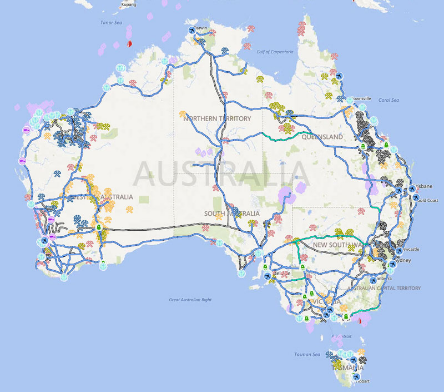Australia has a strong trade relationship with many countries globally, with some of its top trading partners being in Asia for exporting to Australia. The top five exporters to Australia are China, Japan, India, USA and Indonesia. China tops the list with approximately USD 155 billion of exports to Australia in 2023 [1].
Top imports exporting to Australia
The top imports into Australia include refined petroleum, cars , delivery trucks, broadcasting equipment, computers, and medicines [2].
There are establishments guidelines for importing products into Australia. Although there is no requirement for importers (companies or individuals) to hold an import licence to import goods into Australia, some products may require certain permits to pre-authorise the import process. [3] The Australian Border Force website [3] includes detailed information regarding:
- Import entry costs
- Prohibited goods
- Tariff classification
- Valuation of imported goods
- Rules of origin
- Labelling requirements [4]
An extensive list of prohibited goods has establishments [5] and importing of these goods into Australia would result in significant fines or legal consequences.
Understanding Tariffs and Trade Agreements
The Tariff system in Australia [6] has extensive classification, with detailed information about Tariffs and any exemptions with any trading partners when it comes to the products importation.
Country of origin may impact the Tariffs as free trade agreements between Australia and some regions or countries may be applicable to importing certain products into Australia. Information about such trade agreements in a list and already exists in this link.
Not all imported goods need labelling, however those products that require labelling should follow the rules stated in the Commerce Regulation 2016 [7]. Detailed requirements description under the relevant guidelines. [7].
There are also well establishments rules around biosecurity in Australia. Australia has strict rules that aim to restrict imports that may contain any materials that may endanger the environmental ecosystem and natural resources in the country. the Department of Agriculture, Fisheries and Forestry regulates products imported into Australia.[8]
The Biosecurity Import Conditions system (BICON) usually determine whether a commodity intendions for import into Australia:[9]
- has a permition
- is subject to import conditions
- requires supporting documentation
- requires treatment
- needs an import permit.
Transport infrastructure within Australia is a key consideration for many exporters to Australia. As the cities in Australia are either thousands of kilometres apart, trade routes establishments enable transfer of goods . The department of Infrastructure, Transport, and Regional Development website has extensive information about the trade routes within Australia.[8]
Figure 1: Trade Routes in Australia[8]
Key Considerations for Exporting to Australia
Although Australia is a key producer of food products and minerals, it imports significant amounts of products and therefore the Australian market presents significant opportunities for international producers and processors. By understanding the import rules and regulations and assessing the export risks (which include long transit time when transporting using sea freight) the exporters can establish strong presence in the Australian market.

